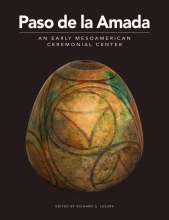A constant concern during the excavations was the effort to trace boundaries of deposits accurately in order to retrieve clean samples of the cultural materials they contained. Our success varied according to characteristics of the deposit, and it was sometimes difficult to trace strata as we came down on them in extensive excavations, even when we had the profiles of tests pits or trenches as guides. The surfaces underlying the platforms in Mounds 1, 12, and 32 were identifiable in profile and generally traceable as we came down on them in the extensive excavations, though we did have some problems in a few units of Mounds 1 and 12. Pits penetrating into sterile substrata were generally identifiable from above based on color and/or texture of the matrix and the high density of artifacts. Their lower boundaries were also clear. Examples include Features 8 and 15 at Mound 1 and Features 2, 10, and 19 at Mound 12. Cherla-phase pits that penetrated into Locona/Ocós deposits were more of a challenge. Color and texture distinctions were difficult to follow or nonexistent, and we traced the boundaries of the pits mainly by noting changes in the density of artifacts. Examples include Feature 2 in Mound 11, Feature 1 in Test 29, and Feature 8 at Mound 32. Despite these challenges encountered during excavation, a more significant factor in the identification of appropriate samples for chronological and social analysis is mixing of materials in the original deposits. A background admixture of earlier and sometimes later materials was common in most deposits. The relatively unconsolidated nature of the sediments at the site and substantial earthen movement by the inhabitants yielded admixtures of earlier materials. Root action and the burrowing activities of rodents yielded admixture of both earlier and later materials.
